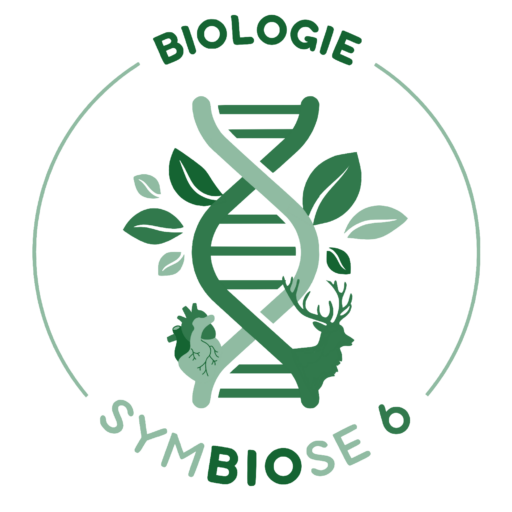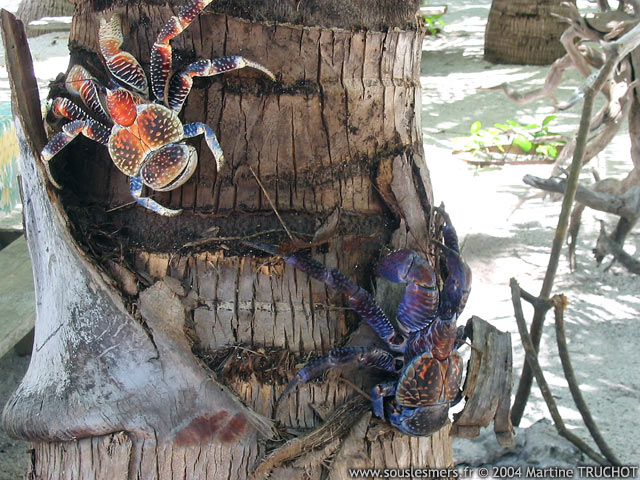
ID CARD
Name: Birgus latro, more commonly known as the coconut crabe and the robber crab, is a species of terrestrial hermit crab. To this day, it is the largest land-dwelling arthropod in the world. This crab is well-known for its kleptomaniac tendencies, its acute sense of smell, as well as powerful metal-cutting pincers.
Habitat: Coconut crabs dig themselves dens on places such as soft ground, forests and sandy regions (anywhere with coconut trees).
Size: A coconut crab can measure up to 40 cm in length with a width of one meter from paw to paw. The male is often larger than the female.
Way of life: This crab is omnivorous. It eats anything as long as it’s organic: fruit, turtle eggs and insect exuviae as well as animal carcasses. The coconut crab can even become a cannibal in the event of famine. This animal is gonochoric and during its developmental phase, it goes through a marine stage in the form of zoea larvae.

INTERESTING FACTS ABOUT THIS ANIMAL TO USE WHILE FLIRTING …OR NOT
Thanks to its powerful pincers, this glutton is capable of opening a coconut by itself. It can also capture live rats and attack animals that are much bigger. For example, a researcher has found Birgus latro attacking a sleeping Red-footed booby.
In the islands in which these crabs live, many objects have gone missing. This isn’t the work of some leprechauns but the work of our little arthropods that take them away to see if they are edible. Crabs are often seen congregating near a food source. It is also a good climber, being able to climb a tree up to 6 meters high.
This species, unlike other hermit crabs, is completely terrestrial, which means that it would drown in a matter of hours if it were in water. You might be wondering why it takes so long for the crab to drown, well that’s because of its branchial system. On land, it uses a specific organ : the branchiostegal lung. It is an organ halfway between the gills and the lungs. Although it is made of the same kind of tissue as gills, it will take oxygen from the air instead of water.
However, the branchiostegal lung requires an intake of water to function. For this reason, the crab will regularly use its pair of hind legs to moisten its respiratory organ, taking the opportunity to wash it at the same time.
The coconut crab has olfactory organs called aesthetascs that are very similar to the sensilla of insects : this is another adaptation to the terrestrial lifestyle. Its aesthetascs are found on the first pair of antennae that the crab jerks around, just like insects, in order to improve olfactory perception.
Although the crab is almost completely adapted to life on earth, it is forced to stay near a source of seawater in order to compensate for possible osmotic imbalances.
Written by Léa Prévost
Translated by Nour El Ghazal
Sources:
- Taylor, H. H., P. Greenaway, and S. Morris. “Adaptations to a terrestrial existence by the robber crab Birgus latro.” Journal of Experimental Biology 179.1 (1993): 93-113. (LINK)
- Combs, Christian A., et al. “Behavioral regulation of hemolymph osmolarity through selective drinking in land crabs, Birgus latro and Gecarcoidea lalandii.” The Biological Bulletin 182.3 (1992): 416-423. (LINK)
- Grubb, P. “Ecology of terrestrial decapod crustaceans on Aldabra.” Philosophical Transactions of the Royal Society of London. B, Biological Sciences 260.836 (1971): 411-416. (LINK)
- https://www.nationalgeographic.fr/video/tv/ce-crabe-de-cocotier-attaque-un-oiseau
- Image reference : http://souslesmers.free.fr/f.php?e=1405
- Illustration provided by Léa Prévost


Comments are closed